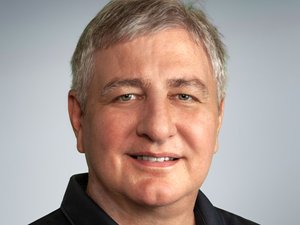Earlier this month Instagram hit 150 million users, just more than two years since it was founded as "that social app that lets you filter your mobile pictures." With such a large number of users – as is with anything that gets that many eyes on it – there is extreme potential for brand engagement among companies. Just as they did on Facebook and Twitter, more and more big businesses began creating Instagram accounts to connect and engage with its fans, evolving the application from just an interpersonal forum to share cool photographs and messages to a brand marketplace.
So obviously, there are some serious implications for companies who use Instragram to promote their brand. Today, D.C. startup TrackMaven released a report on just that, analyzing the trends of Fortune 500 companies on Instagram and the effects of their campaigns. And the report shows both predictable and very surprising details on how the biggest companies are – or for the most part, aren't – using Instagram to their advantage.
"We took the entire Fortune 500 and we put into TrackMaven all of their Instagrams and looked at every single Instagram picture they every did," said TrackMaven founder Allen Gannet. Gannett founded TrackMaven in 2012 to "help big brands benchmark, track and improve on marketing. So you can use TrackMaven to see how you're doing versus your competitors." Some of the company's eclectic clients so far are Martha Stewart Living, La-Z-Boy Furniture and the NBA.
"It was a huge set of data," Gannett said of the Fortune 500 Instagrams. "Like 19,000 pictures."
But after entering those photos into TrackMaven, Gannett and his team were able to deduce some pretty noteworthy trends on big brands' usage of the platform.
First, it's worth noting that slightly less than 25 percent of the Fortune 500 actually use the application at all – specifically, 123 use the program, whereas 387 use Twitter and 348 use Facebook.
While that's not an impressive number at all, the TrackMaven founder explained that "for something that a year ago wasn't thought of as such a serious thing – that's pretty crazy," explaining more will likely continue to join. Starbucks was the first to flock to Instagram in Dec. 2010, followed by Southwest Airlines, AutoNation and 12 other Fortune 500s in 2011.
From there, TrackMaven went on to look at the content big brands were producing. Almost none of the Fortune 500 companies have adopted using the video feature, with only 243 videos on Instagram from the 123 total Fortune companies. But combining those with the almost 20,000 big brands' pictures, TrackMaven counted the number of interactions – essentially if content was liked or commented on – to determine the effectiveness of the post. Therefore, the company could determine what worked best in an Instagram post.
For instance, filters played a big part in a post's effectiveness. "We looked at the effectiveness of every single filter," Gannett said. "Mayfair is the most effective filter" based on the number of engagements per baseline 1,000 followers. On average, the report states, Mayfair brings in 23.044 engagements when used for the big brands. The most used, however, was no filter. "It's kind of amusing," Gannet said, but explained,"it's because brands generally don't filter or because they like touching up in Photoshop before uploading images." No filter, probably because of how much it is used, is also the second-most effective, according to the report.
Perhaps the most integral finding, Gannett explained, was the revolution of the hashtag on Instagram. "A lot of brands don't realize this, but the way people use Instagram is they're searching for content," he said. "Let's say I like coffee, so I search for latte art," Gannett explains in the Dupont Circle Starbucks. "Then I'll see things I like and engage with it. A lot of brands just post content and expect people to follow them, but actually Instagram is a discovery platform for people looking for things to engage with. Brands that used hashtags have been more effective than brands that didn't."
There's even a correlation between the number of hashtags you use, up to five, and the effectiveness of a brand's post. "Five hashtags is the sweet spot, "Gannett said. "So if you're a brand, you should have around five hashtags on your content so that there's enough things when people search they can find it. Otherwise you're just posting it and no one's ever going to find it unless they follow you."
TrackMaven used a case study within the report to illuminate this point. FedEx, an otherwise unsexy brand that nevertheless rakes in the cash, has huge engagement on Instagram. Specifically, Gannett found that this often has to do with the company's use of hashtags, of which it on average uses 4.7 per picture. While the company does not have a huge following (just 2,115 followers) its average engagement per thousand followers per post is huge, at 73.68.
Needless to say, engagements on Instagram translate to brand loyalty, which then translates to sales. Thus, it doesn't take much of an explanation to convey the importance of this kind of social marketing, though TrackMaven's report expresses it more implicitly. But with data like this, it seems like there's no excuse for the other 377 companies – and all brands in general – to not be using the platform to engage their fans. And that means actively using the platform, as Gannett explains that of the 123 that do use Instagram, only 17 percent are regularly active. Even if they're not fun and illustrative consumer brands like a Nike or Ralph Lauren, they can still build their brand, as proven by FedEx. Additionally, the report drills down into the data so much more, so this report is definitely worth taking a look at, especially if you're marketing a brand, but even if you're just a regular person interested Instagram.




